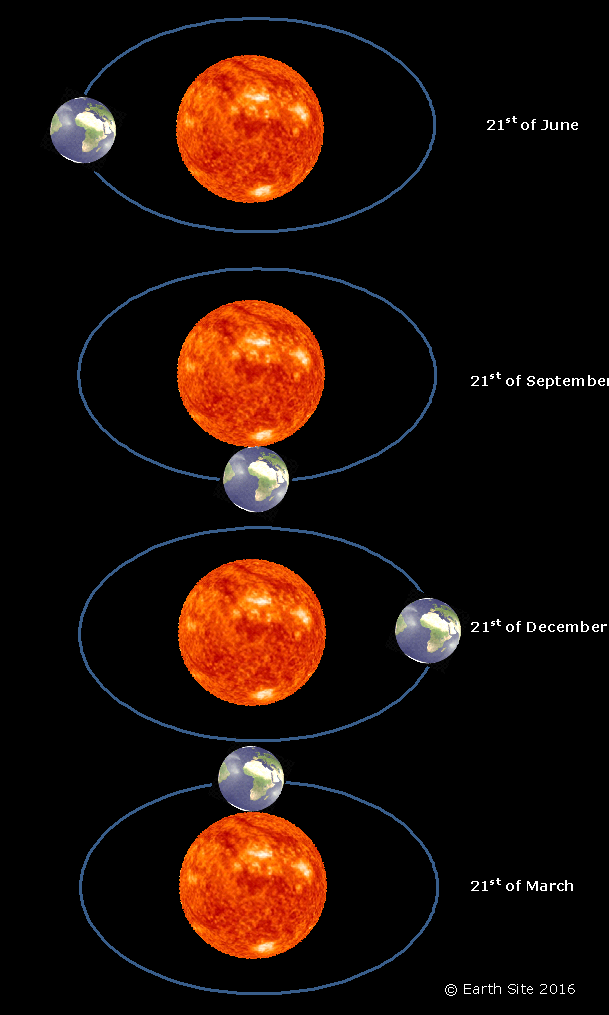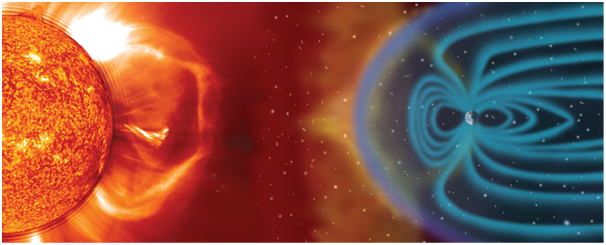Planet Earth gets its name from the old English word ‘eorthe’ meaning ground. It is the only place in the universe that we know sustains life.
Planet Earth – the Cradle of life
Planet Earth – the Cradle of life

Earth gets its name from the old English word ‘eorthe’ meaning ground. It is the only place in our solar system that we know sustains life which is attributed to many factors, including its distance from the Sun. Earth is at a distance that allows water to form as a liquid giving us the oceans from which life began. Our strong magnetosphere is created by our large iron core and the momentum of the planet, without it, solar storms would’ve destroyed any chance life long ago.
Origin of Earth
In 1975 two papers were published with a new theory that would change our picture of how Earth was formed and its relationship with our moon. One paper by William K. Hartmann and Donald Davis and another by Alfred G. W. Cameron and William Ward were written to explain why the moon has such a small metallic core which seems to be abnormal to the other celestial bodies in our solar system. The theory is called ‘The Giant Impact Hypothesis’ and is now regarded as the most plausible explanation for the structure of our moon and Earth.

For many years physicists tried to explain how the moon was formed but these theories didn’t fit with what we now about planetary formation, then in the 1970’s two pairs of physicists working on the problem came to the same conclusion.
The theory is that late into the formation of Earth while it was still a hot molten void it was struck by another planetary body about the size of Mars. The other planet hit what would become Earth on one side but with enough force to cause our spin and sheer off most of the crust. This sent the smaller planet spinning around with a tail of its own crust following. Both planets span around each other before coming together once more.
When the bodies collided for a second time their large iron cores fused together with most of the crust forming around the outside of this newly formed planet. Some crust was ejected into close orbit where it began to coalesce into the moon.
This theory explains why Earth has such a large core and why the moon is mainly made of silicon rock like our crust. It is still only a hypothesis as many experiments required to prove it conclusively would be very difficult to perform but all data collected including radioactive dating shows that the Earth and moon formed between 50 – 100 million years after the rest of the Solar system.
Seasons of Planet Earth
The seasons on our planet are created due to the tilt in its rotation. The access which Earth rotates on is not perfectly vertical to its solar orbit as it is with many planets. The Earth’s axis is at a 24.5 degree angle which has a dramatic affect to life on Earth. Many plants have their life cycle based on the seasons while many animals migrate or hibernate to survive and it is all because of this tilt.

21st of June
On or around this day the northern hemisphere is facing towards the sun and is therefore getting the most hours of sunlight compared to the rest of the year. For the northern hemisphere this is mid-summer.
Meanwhile the southern hemisphere is pointing away from sun and receiving the least amount of hours sunlight compared to the rest of the year. For the southern hemisphere this is mid-winter.
21st of September
On or around this day the northern hemisphere and southern hemisphere are receiving equal amounts of daylight and night-time. For the northern hemisphere this is the autumn equinox while for the southern hemisphere it is the spring equinox.
21st of December
On or around this day the northern hemisphere is facing away from the sun and is therefore getting the least hours of sunlight compared to the rest of the year. For the northern hemisphere this is mid-winter.
Meanwhile the southern hemisphere is pointing towards the sun and receiving the most hours of sunlight compared to the rest of the year. For the southern hemisphere this is mid-summer.
21st of March
On or around this day the northern hemisphere and southern hemisphere are receiving equal amounts of daylight and night-time. For the northern hemisphere this is the spring equinox while for the southern hemisphere it is the autumn equinox.
Earth by Numbers
Radius at the Equator: 6,371 km or 3,958 miles
Radius at the Poles: 6,356 km or 3,949 miles
Average Radius: 6,371 km or 3,959 miles
Circumference at the equator: 40,030 km or 24,873 miles
Circumference at the poles: 40,007 km
Earth’s Mass: 5,972,190,000,000,000,000,000,000 kg
Earths Volume: 1,083,206,916,846 km3 or 259,875,159,532 miles3
The Radius of Earth’s core: 3,485 km
Density: 5.513 g/cm3
Surface Area: 510,064,472 km2 or 196,936,994 square miles
Surface Gravity: 9.80665 m/s2
Escape Velocity: 40,284 km/h or 1.119 x 104 m/s
Inside Planet Earth

The Outer crust is a solid crust of rock less than 0.3 % of the Earths centre. The second layer is molten rock that has been heated by the radioactivity of the core and the pressures acting upon it. The next layer down is a massive sea of molten iron about the size of the moon.
New data shows that within the sea of molten metal and in the very centre of the Earth is a very large solid mass of an iron, nickel alloy slightly smaller than the moon. New experiments using iron-nickel alloys show that the centre is likely to contain giant crystals up to 10 km in length that grew in the direction of the poles. This explained another mystery which was why shockwaves seemed to travel faster north to south as opposed to east to west. It is now believed that these giant crystals act as a conduit increasing the speeds of the shockwaves travelling North and South.
It seems as if it would be impossible for man of machine to journey to the centre of the Earth as the pressure and temperature continues to increase and it is believed that the temperature increase by about 20 degrees centigrade for every kilometre travelled towards the Earth’s centre which is believed to be 3000 times that of the surface
Earth’s Magnetosphere
Within the outer core the hot molten metal sea moving towards the surface and then sinking again in a giant whirlpool creates the Earth’s gigantic magnetosphere. The magnetosphere is a powerful magnetic field that surrounds the earth’s atmosphere and protects us from most dangerous cosmic rays and solar flares, as well as creating our magnetic poles. But new understanding of these fluid iron whirlpools are showing that the Earth doesn’t have solid north and south magnetic poles but the poles move slightly and constantly.
More alarmingly is that a part of our magnetosphere appears to be weakening and has been for some time. The phenomenon is being closely measured by scientist and they have named the phenomenon called the South Atlantic anomaly. The Hubble telescope seems to be showing possible effects of this when it passes through the south Atlantic anomaly it is being bombarded by cosmic particles that are getting through the weakened magnetosphere. These particles on occasion are causing interference with the Hubble telescope and have caused a loss in communication.
It means that the movement of the core could, over 1-10 thousand years, cause the poles to flip entirely but the gradual change may produce some very strange effects on earth such as two north or south poles simultaneously. Evidence has been found that the Earth’s poles have changed and flipped on many occasions and chances are will continue to do so.
Where in the Solar System?
Quick Stats of Earth
|
Moons |
1 |
|
Rings |
0 |
|
Orbit period |
365.26 Earth Days |
|
Rotation Period |
23.93 Hours |
|
Equatorial Period |
6,378 km (3,963 miles) |
|
Overall Density |
5.515 g/cm3 |
|
Mass (Earth = 1) |
1 |
|
Gravity (Earth = 1) |
1 |
|
Minimum Temperature |
-88°C (-126°F or 185 °K) |
|
Maximum Temperature |
58°C (136°F or 331 °K) |
See also:





